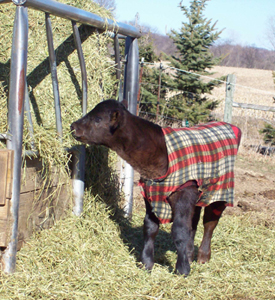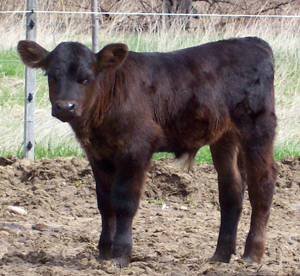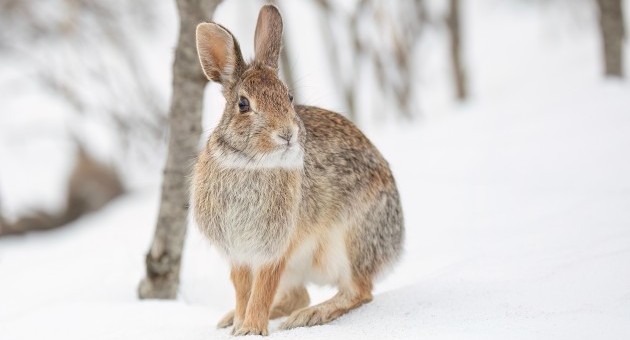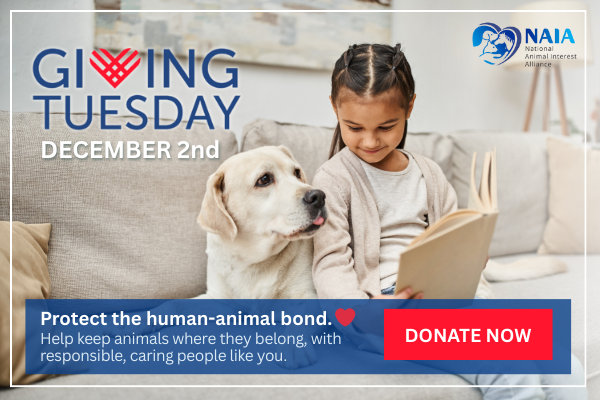From Orphan to 4-H Class Winner
Bruce was born an orphan - a tough way to start a life, especially if you are a calf born 21 days early by caesarian section and expected to live in a barn in March in Michigan. As it turned out, Bruce's mother (actually at the time Bruce didn't have a name, he was 12Y) didn't go to the feeder to eat one day, a sign that something was amiss. So we brought her up to the barn and examined her and discovered she had disseminated cancer. She had lymphoma, a cancer of the lymph nodes. Lymphoma is also seen in humans, cats, dogs, as well as cattle. While we often treat humans with lymphoma and may consider treating cats and dogs - cattle with lymphoma are different for a number of reasons.
All cattle - your PBR bucking bull, your miniature pet Hereford, your favorite show heifer, your best bull, your entire herd (as well as other domestic ruminants, sheep and goats) are considered "food animals." And as "food animals" (animals raised to provide food for humans) there are very strict rules and regulations about what drugs can and cannot be used in cattle and what period of time must elapse before an animal can go to slaughter. In addition to the rules about drug use, consider the size of the average human ("the 150 pound man") vs the size of the average cow (1200 to 2000 pounds!!), remembering that drugs are often dosed on an amount per pound basis - so even if you considered treating a cow with cancer the cost would be prohibitive, coupled with the fact that many of the drugs used to treat human cancer are scarce or not produced in sufficient amounts for humans. So treating Bruce's mother for cancer was not an option, but delivering the calf 21 days early and humanely euthanizing the cow was.
One can calculate a due date for cattle based on the 283 (plus or minus) gestation date. Now like anything else that Mother Nature controls, there is wiggle room, in this case about 2 weeks on either side of the due date. Some breeds and some cows tend to calve early and some breeds and some cows tend to calve later, but within that 28 day window things should be OK. Twenty one days early is a bit of a risk, as the calf is likely to be premature and require a heavy dose of TLC to pull him through in good stead. There are some clues that a calf is premature - very short hair coat (less than a quarter inch), teeth (remember, cattle only have bottom front teeth) barely erupted, and soft hooves. Premature calves, like premature puppies, kittens and humans, are prone to a host of maladies made more challenging because they were "born in a barn."
A C-section on a cow is not an endeavor for a single person and it is much nicer and cleaner if it can be done inside in a clinic. We took Bruce's mother to the clinic where our favorite bovine surgeon, Dr Kent Ames, worked his surgical magic and delivered a 66 pound bull calf. While a group of people worked on the cow another group worked on the calf - rubbing him to dry him off and stimulate him to breathe. He was given 2 quarts of colostrum, dressed in a purple polar fleece coat and driven to the farm on floor of the pick-up. The trailer was empty.
 Before the calf warmer, we had a premature calf living in the mud room - not only was it like living next door to a collie in high heels, but also he drove the dogs nuts. The calf warmer was an excellent mental health investment for all residents of the farm. Bruce was premature, short hair, teeth barely erupted, soft hooves, so the plan was to teach him to climb into the calf warmer and spend most of his time there, coming out for a little exercise and 3 meals a day. Once it was clear he was out of the woods he would spend some time during the day in a pen, then time in a pen with a friend to teach him how to be a bovine, then time with more bovines, then all day with bovines. Gradually Bruce became a member of the herd. While it was clear that Bruce was a bovine, it was also clear very early on that Bruce was special - a very kind soul and a nice boy - we started the quest early to find Bruce a little girl so he could have not just a good life, but an exceptional life as a well-loved 4-H steer.
Before the calf warmer, we had a premature calf living in the mud room - not only was it like living next door to a collie in high heels, but also he drove the dogs nuts. The calf warmer was an excellent mental health investment for all residents of the farm. Bruce was premature, short hair, teeth barely erupted, soft hooves, so the plan was to teach him to climb into the calf warmer and spend most of his time there, coming out for a little exercise and 3 meals a day. Once it was clear he was out of the woods he would spend some time during the day in a pen, then time in a pen with a friend to teach him how to be a bovine, then time with more bovines, then all day with bovines. Gradually Bruce became a member of the herd. While it was clear that Bruce was a bovine, it was also clear very early on that Bruce was special - a very kind soul and a nice boy - we started the quest early to find Bruce a little girl so he could have not just a good life, but an exceptional life as a well-loved 4-H steer.
Bottle babies are a huge commitment - time, money, emotional investment. Bottle babies need to be fed at least twice a day and ideally 3 times. To grow and stay healthy they need high quality milk replacer, made from milk, not soy, that has at least 20% protein and 20% fat. This means that 2 or 3 times a day, rain or shine, snow or ice, you are shlepping down to the barn with a couple of freshly made warm bottles of milk for the baby calf. Because it is cold, and you want him to have warm milk, the 2nd bottle may be wrapped in a bucket and the 1st may have a polar fleece cover. Baby calves, when they are hungry and want more milk, make it very clear to their mother by bashing the udder with their head. Cows are remarkable tolerant of this behavior. I am not - there is enough force in that bash to break a rib, injure a wrist, smash a hand. Usually you have to teach a calf that bashing the human is not acceptable - Bruce was special - he never bashed.
Once he became a member of the herd, Bruce would wait for me at the gate - when I drove in or walked up he would follow along, waiting for a meal. The goal was to teach him to steal from other cows - when he repeatedly refused a bottle we knew he was as successful thief.
Now you may recall it was a Y year and that we try to name our calves after the letter of the year - you would certainly be right in thinking that Bruce does not begin with a Y. Bruce being a special calf needed a special name but Y is really an unpleasant letter for naming calves - so Bruce's full name is "Your Cabana Boy Bruce" named after the long time companion of a friend who calls Bruce her "cabana boy." Everyone, including Bruce and his namesake, was happy with the chosen name.
4-H is a great program teaching youth not only about responsibility, animal care, animal welfare, but also hard work, interaction with adults, sportsmanship, finances, animal agriculture and a host of other things. There are many different ways kids can be involved in 4-H but the beef project is one of the most demanding of time, hard work and commitment. Typically the kids pick out their calves in late summer early fall (after their fair so they have money to buy their calf) and keep and work with the calf for the next year. The goal with a steer (castrated male) calf is to have him trained and finished for the next year's fair. Training, not all that unlike conformation in dog shows, results in an animal that walks on a halter and stands (poses) in a certain way so the judge can evaluate movement, conformation and finish. "Finished" means that he is ready for harvest (slaughter) - that there is enough weight, enough "cover" (fat) so that the calf will provide excellent meat. Getting a 4-H calf finished at the appropriate weight at the appropriate time is an art. You may wonder why movement would be important - after all the calf has a finite life span, but during that time he must be able to walk to get food and water, walk to exercise, and if he is in a pasture based or grass fed farm he must be able to walk to find his food.
 Every late spring we get calls and emails from kids looking for a steer - we try to match the steer with the kid (or vice versa) as a big strong headed steer may not be appropriate for a petite beginner with little confidence, but could be perfect for the kid with several years of experience under their belt. You want the kid to have a good experience, especially early on, to really enjoy the interaction with the steer.
Every late spring we get calls and emails from kids looking for a steer - we try to match the steer with the kid (or vice versa) as a big strong headed steer may not be appropriate for a petite beginner with little confidence, but could be perfect for the kid with several years of experience under their belt. You want the kid to have a good experience, especially early on, to really enjoy the interaction with the steer.
Late last summer we got a call from a friend whose granddaughter was looking for a steer. Grandpa was pretty excited and they were making the local cattle tour to find Danica a steer. We had met Danica at the previous year's fair - Grandpa had given her a steer from his herd to get started - she had raised, shown and sold the steer and now had her own money to buy a calf.
Grandpa had a plan - a list of places to go, steers they had seen, prices and preferences. What he didn't know was that Bruce had a plan - he wanted to be a little girl's 4-H steer and so when they arrived to look at calves Bruce walked right up to Danica and encouraged her to pet him. Now if you don't know cattle, you wouldn't know that this is not usual behavior for a calf, even at farms like ours where we put an emphasis on calm temperament. In response to something new (which they are allowed to explore but is not forced upon them) calves will watch, and slowly cautiously approach. If the something new is a person kneeling, they will approach, but if you sneeze - bingo they jump back! If you change your position, they slow down - if you are immobile and patient they may lick your boots or chew on your hair. And while I can usually touch all my calves and some seek out human attention, a calf walking up to a novel new person and encouraging them to rub and scratch their back is unusual calf behavior - and that is just what Bruce did.
Danica and Grandpa looked at all the calves, Grandpa made notes, and Bruce put on the charm. When it was time to leave Grandpa said they had other places to look and they would be in touch. Danica said (in a whisper) "I will be back for Bruce" and true to her word she was. The two had some great experiences as Bruce was fed and trained to walk on the halter and groomed. He was washed and rinsed and brushed and dried and train the hair to go in a certain direction. He got used to the routine. He was pampered as were his barn mates.
The county fair is not a one day event but a week where the animals are on display and the kids must feed and groom their calves before the fair opens to the public and keep the area clean and tidy. It is a tremendous amount of work added on to the year work. Different species show on different days and there are also classes called "showmanship" where the kids ability to show their animal and not the animal is evaluated. And of course there is the changing of the clothes repeatedly throughout the fair, as the clothes you wear to keep your calf and area clean are not proper show ring attire. It is a busy time for all involved.
On show day Danica washed, rinsed, brushed Bruce's coat and used a "blower" to blow it dry. An older 4-H'er, Paige, clipped Bruce so his coat (it is called "fitting") was perfect. Fitting, just like dog and horse shows, shows the animal off to his best advantage - a skilled fitter is an artist and knows that it takes a years worth of work, not an hour of clipping, to really fit a steer. Danica had done the work and Bruce was ready for the show. Steers are generally shown by weight and so the classes are divided by weight - the lightest steer in the class enters first, followed by the next lightest, etc. The steers are lined up (next to each other all facing the same direction), the kids pose the steers and use the show stick to rub their bellies (keeps them calm and they like it) - the judge walks up and down the row of steers looking at each one. The steers are then asked to move in a pattern, lightest steer first , followed by next lightest etc, so the judge can see how the calves walk -are they structurally correct, are they lame, how do they "travel." Then they line up again (this time head to tail) and the judge walks through again - often touching the steer to see how well they are finished. He may ask the kids questions. He then takes the microphone and picks his class winner and describes why s/he made this pick.
The highlight of our fair was when the judge named Bruce and Danica class winners. The judge commented on his muscling and finish and structural correctness - we commented upon his excellent temperament and pleasing personality. Everyone was pleased with the pair's performance, including his namesake. Danica had a great experience, she learned a lot and had fun, she thanked me for "loaning me Bruce." Bruce didn't just have a life worth living - Bruce had an exceptional life, and that was our goal.
 |
Like this article? Don’t forget to share, like or follow us |
 |
NAIA WEEKLY ROUNDUP
FEATURED & LATEST ARTICLES
GET THE NAIA WEEKLY ROUNDUP VIA EMAIL FOR FREE
Stay Connected with The NAIA: Sign Up for The Weekly Roundup
Join our FREE newsletter and community of animal advocates and receive The NAIA Weekly Roundup straight to your inbox. Stay in the loop with the latest news, events, and ways you can make a difference in the lives of animals. Sign up now to stay informed to create positive change!
Sign Up



 NAIA at CITES CoP20, Unexpected Animal Interest Alliances, and More!
NAIA at CITES CoP20, Unexpected Animal Interest Alliances, and More!
 Sanctuary Gets a Big Fine, Dogs Kill Dogsitter, and More…
Sanctuary Gets a Big Fine, Dogs Kill Dogsitter, and More…
 Weekly Roundup: Thanksgiving Week Edition
Weekly Roundup: Thanksgiving Week Edition
 NYCLASS Lawsuit, Penguin Retirement Homes, Beagle Noses, and More!
NYCLASS Lawsuit, Penguin Retirement Homes, Beagle Noses, and More!



